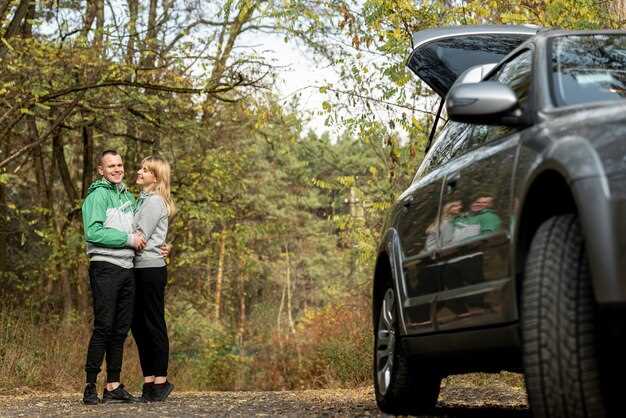Should You Buy or Lease Your Next Jeep?


When it comes to acquiring your next Jeep, the decision between buying and leasing can significantly impact your financial outlook and driving experience. Both options offer unique advantages and drawbacks that cater to different lifestyles, budgets, and preferences. Understanding these key factors can help you make an informed choice that aligns with your needs.
Financing a vehicle typically involves taking out a loan to cover the purchase cost, allowing you to own the Jeep outright once the loan is paid off. This ownership comes with the freedom to customize your vehicle and the potential for long-term savings. In contrast, leasing a Jeep usually requires lower monthly payments and offers the latest models without the commitment of ownership. However, leasing often comes with mileage limits and other restrictions that may not suit everyone.
Ultimately, your decision should consider factors such as your financial situation, driving habits, and personal preferences. Weighing the benefits of financing against the flexibility of leasing can clarify which option is the best fit for your next Jeep adventure.
Buying vs Leasing Your Next Jeep: Key Factors to Consider

When deciding whether to buy or lease your next Jeep, there are several important factors to consider that can significantly impact your financial situation and driving experience.
First, consider your driving habits. If you plan to drive extensively or take long road trips, buying may be the better option. Owning the vehicle allows you to accumulate unlimited mileage without incurring additional fees, which is often a restriction in lease agreements. Conversely, if you anticipate lower mileage and prefer a new vehicle every few years, leasing may be more suitable, offering lower monthly payments and the option to drive a latest-model Jeep.
Next, evaluate the long-term financial implications. Buying a Jeep typically requires a larger upfront payment or higher monthly financing costs, but you ultimately gain equity in the vehicle. Once the loan is paid off, you own the Jeep outright and can enjoy years of no payments. Leasing often quotes lower monthly costs, but at the end of the lease term, you have no ownership and must return the vehicle or lease another one, which can lead to a continuous cycle of payments.
Additionally, consider maintenance and warranty factors. Leasing usually comes with a warranty that covers most repairs. If you buy, you might need to budget for maintenance costs as the vehicle ages, although some drivers appreciate the freedom to modify or personalize their Jeep without restrictions, which leases often impose.
Finally, think about your lifestyle preferences. Owning a Jeep allows for greater flexibility in customization and usage, whereas leasing can offer the convenience of new technology and safety features with minimal hassle. Weighing the benefits and drawbacks of both options will help you make a more informed decision tailored to your needs and lifestyle.
Understanding the Financial Implications of Buying a Jeep
When considering the purchase of a Jeep, it’s essential to evaluate the financial aspects involved. Understanding financing options and the total cost of ownership can help you make an informed decision.
Here are key factors to consider when evaluating the financial implications of buying a Jeep:
- Initial Cost: The upfront price of purchasing a Jeep can vary significantly based on the model, features, and optional add-ons. Ensuring that it fits your budget is crucial.
- Financing Options: Most buyers will need to explore financing through banks, credit unions, or dealership offerings. Factors to consider include:
- Interest rates
- Loan duration
- Down payment requirements
- Monthly payment amounts
- Impact on credit score
- Depreciation: Like all vehicles, a Jeep will depreciate over time. Understanding its residual value can help you gauge your investment.
- Insurance Costs: Owning a Jeep may involve higher insurance premiums, depending on the model and your driving history. Be sure to get quotes in advance.
- Maintenance and Repair: Owning a vehicle includes ongoing maintenance costs. Research the average costs for repairs and servicing a Jeep to budget appropriately.
- Potential Resale Value: Some Jeep models have longer-lasting value than others. Researching the resale market can offer insight into your investment return.
Ultimately, understanding the financial implications of buying a Jeep can help ensure that you make a sound investment that aligns with your budget and lifestyle. Taking the time to research and evaluate these factors will pay dividends in your decision-making process.
Evaluating Your Driving Habits for Jeep Leasing

When considering leasing a Jeep, understanding your driving habits is crucial. Start by assessing how often and how far you typically drive. Leasing agreements usually come with mileage limits, often ranging between 10,000 to 15,000 miles per year. If you frequently take long road trips or have a daily commute that exceeds these limits, leasing may not be the best option for you.
Think about your driving environment as well. If you mainly drive in urban settings with stop-and-go traffic, leasing a Jeep may offer advantages, such as lower monthly payments and the ability to drive a new vehicle every few years without the long-term commitment of ownership. However, if you live in a rural area where off-road capabilities are essential, ensure the lease terms accommodate your lifestyle.
Additionally, reflect on your need for vehicle features and technology. Leasing allows you to drive a Jeep equipped with the latest features, providing comfort and safety advantages. However, if you are someone who prefers a specific model or design that might not be available in a leased vehicle, this could affect your decision.
Finally, evaluate your financial situation. Leasing typically requires lower down payments and offers more affordable monthly installments compared to buying. However, remember that at the end of the lease, you won’t have any equity in the vehicle. Weigh these financial aspects against your budget and long-term plans to determine if leasing a Jeep aligns with your overall goals.
Comparing Maintenance Costs: Ownership vs. Lease Agreements
When deciding between buying and leasing your next Jeep, one of the critical factors to consider is the maintenance costs associated with each option. Both ownership and lease agreements come with their own sets of responsibilities and potential expenses that can significantly impact your overall budget.
Ownership typically means you are responsible for all maintenance costs for the duration of the vehicle’s life. This includes regular servicing, repairs, and potential unforeseen issues that may arise as the Jeep ages. Owners often face higher maintenance expenses as the vehicle accumulates mileage and experiences wear and tear. Additionally, while new Jeeps may come with warranty coverage, those warranties generally do not cover maintenance services, leading to out-of-pocket costs for oil changes, tire rotations, and brake replacements.
On the other hand, leasing a Jeep usually includes a maintenance package or warranty that covers many routine services throughout the lease term. This can significantly reduce your financial exposure to repair costs. Since lease agreements often stipulate a shorter term–typically two to three years–the likelihood of encountering high maintenance expenses diminishes as the vehicle remains relatively new. However, it’s important to note that lessees may be responsible for any damages beyond normal wear and tear, which could result in additional costs at the end of the lease.
In conclusion, if you opt for ownership, prepare for potential high maintenance costs as your vehicle ages. Conversely, leasing can provide a level of predictability concerning maintenance expenses, offering peace of mind during your term. Ultimately, your choice between buying and leasing your Jeep should take into account your driving habits, budget flexibility, and how much you value the potential savings on maintenance over the vehicle’s life.
